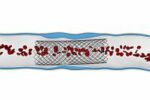Original title: Percutaneous Left Ventricular Assist Device with Tandem Heart for High-Risk Percutaneous Coronary Intervention: The Mayo Clinic Experience. Reference: Oluseun O Alli, et al. Catheterization and Cardiovascular Intervention 80:728:734 There is a small group of poor surgical patients admitted for surgery that due to complex comorbidity, coronary anatomy and compromised left ventricular function that can be treated...
Are reversal flow cerebral protection devices useful in carotid angioplasty?
Original title: Prospective, Multicenter European Study of the GORE Flor Reversal System for Providing Neuroprotection During Carotid Artery Stenting Reference: Dimitrios Nikas, et, al.Catheterization and Cardiovascular Intervention 80:1060-1068 Cerebral protection systems (CPS) have proved useful in carotid angioplasty stenting (CAS), although it is not clear what the advantages are in respect to carotid endarterectomy, except in high risk...
Radial Approach, 1st choice in Acute Coronary Syndromes
Original title: Radial Versus Femoral Randomized Investigation in ST-Segment Elevation Acute Coronary síndrome. The RIFLE-STEACS (Radial Versus Femoral Randomized Investigation in ST-Elevation Acute Coronary Syndrome) Study. Reference: Enrico Romagnoli et al. J Am Coll Cardiol 2012;60:2481–9. Bleeding in patients with acute coronary syndromes (ACS) is an independent predictor of morbidity and mortality. Until today, evidence supporting the radial...
Strategies for treating left coronary trunk restenosis.
Original title: Clinical and Procedural Predictors of Suboptimal Outcome After the Treatment of Drug-Eluting Stent Restenosis in the Unprotected Distal Left Main Stem The Milan and New-Tokyo (MITO) Registry. Reference: Circ Cardiovasc Interv. 2012;5: 491-498 We have very little data on the percutaneous treatment of restenosis of an unprotected LMCA. The aim of this study was to evaluate...
Future strategies to prevent restenosis and stent thrombosis
Original title: Endothelial cell repopulation after stenting determines in-stent neointima formation: effects of bare-metal vs. drug-eluting stents and genetic endothelial cell modification. Reference: Douglas G et al. European Heart Journal doi:10.1093/eurheartj/ehs240 Experimental models of vascular injury have shown that the rate of endothelial cell repopulation post-injury is a critical factor in determining subsequent neointima formation as well as...
Angioplasty for the erectile dysfunction
Original title: Zotarolimus-Eluting Peripheral Stents for the Treatment of Erectile Dysfunction in Subjects With Suboptimal Response to Phosphodiesterase-5 Inhibitors. Reference: Jason H. Rogers et al. J Am Coll Cardiol 2012. Article in press Up to 52% of men between 40 – 70 years old present some degree of erectile dysfunction, and 50% of these men get a suboptimal...
Risk Score for carotid angioplasty
Original title: Risk Prediction for Adverse Events After Carotid Artery Stenting in Higher Surgical Risk Patients Reference: Neil J. Wimmer et al. 2012;43: 3218-3224 Stroke. There are many patients with high surgical risk for carotid endarterectomy, either because of unfavorable anatomy, comorbidities or both. In this situation carotid angioplasty is a therapeutic option. However, no score has been...
Risk scores in patients with acute coronary syndromes
Original title: Walking Beyond the GRACE (Global Registry of Acute Coronary Events) Model in the Death Risk Stratification During Hospitalization in Patients With Acute Coronary Syndrome. Reference: Rapouseiras-Roubín S, et al. J Am Coll Cardiol Intv 2012;5:1117–25. Discriminatory power of risk score predictors become fundamental in the management of patients with acute coronary syndromes. This tool lets you...
What are the chances we presently have of carrying a cardiovascular disease at some point in our lives?
Original title: Lifetime Risk and Years Lived Free of Total Cardiovascular Disease Reference: John T. Wilkins et al. JAMA. 2012; 308(17):1795-1801. This study analyzed more than 120,000 patients in the cohorts of large community studies, such as the Framingham, who did not have cardiovascular disease at the time of inclusion Considering all the age subgroups, only between 1.7%...
Jornadas Ecuador 2012
The most relevant presentations from 18° edition of SOLACI Sessions, 6th region Pacific, held on 4 and 5 October 2012 in Ecuador.





